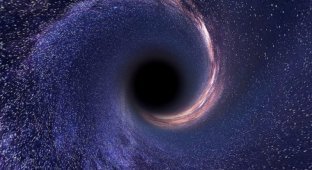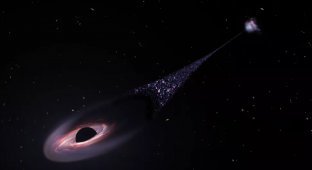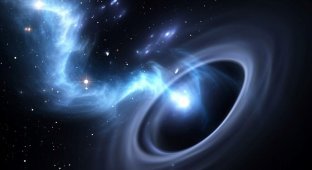A black hole has exceeded its physical maximum by 40 times. Scientists don't understand how this is possible (6 photos)
Imagine a car traveling 40 times faster than the speed limit on the highway, as dictated by the laws of physics. Absurd? That's how astrophysicists feel when observing the black hole LID-568. This cosmic "monster" is growing with an appetite that literally extends beyond the universe—at least beyond what we thought possible. 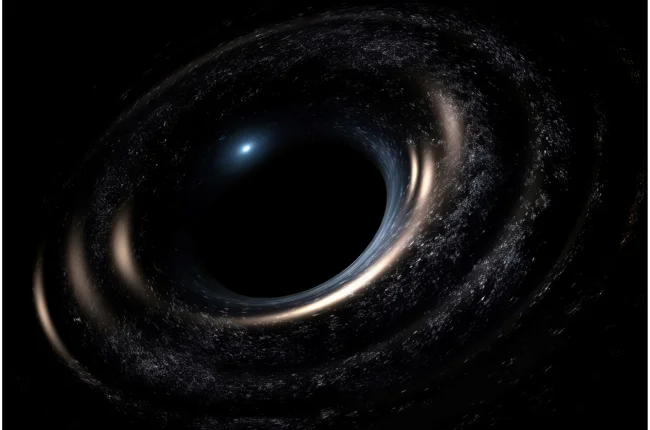
The James Webb and Chandra X-ray Observatory telescopes have discovered an object in space consuming matter at a rate of about six solar masses per year.
Well, it's as if the Sun disappeared every two months.
The black hole itself has a mass of approximately 7.2 million solar masses, and it shines so brightly that its luminosity is calculated to be 40 times greater than the theoretical Eddington limit.
To understand how a black hole can shine and what lies behind these formulas, let's break it down into simple terms.
What is the Eddington limit in simple terms?
When a black hole "eats" matter, a bright disk of hot gas—an accretion disk—forms around it. It is this disk, not the black hole itself, that emits light. This is well illustrated in the movie "Interstellar": 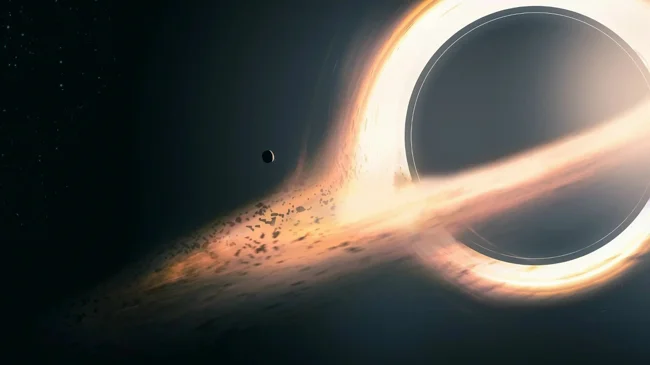
Light pushes infalling matter outward, creating counterpressure. There comes a point when light and gravity balance out. Imagine it as if you were trying to approach a super-powerful fan, which pushes you back. This parameter is the Eddington limit—a natural "speed limiter" for the growth of black holes. It can't consume more simply because the "food" begins to be repelled.
According to the laws of physics, if a black hole tries to "eat" faster, the pressure of light should blow away the approaching gas.
Yes, light has pressure too. It's created by light particles called photons when they collide with other particles (such as an electron or an atom). The photon transfers some of its momentum to the other particle, creating a "push."
But the giant black hole ID-568 doesn't obey the rules—it continues to calmly consume matter, as if the laws of physics (discovered by humans) don't apply. 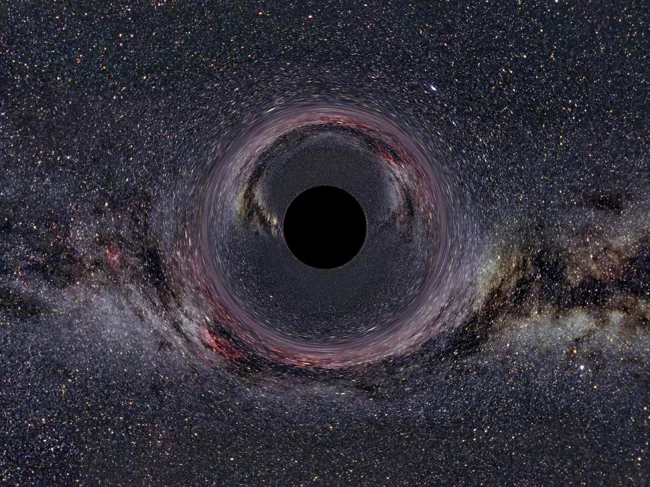
Let's add another twist: this black hole appeared quite early in the history of the Universe. It appeared just 1.5 billion years after the Big Bang.
According to modern astrophysics, such black holes could not have formed so early—the necessary mass simply could not have accumulated. They most likely formed 4 billion years after the Big Bang.
It's like meeting a ten-year-old child nearly two meters tall—science can't keep up with the facts.
LID-568 demonstrates that the early Universe was capable of organizing bursts of supercritical accretion, which could have allowed black holes to grow millions of times faster than classical models.
Scientists are perplexed: how can a black hole grow so quickly, breaking its own physical "brakes"? 
How Nature Fools Physics (and Why It Changes Everything)
And yet, scientists have put forward several bold hypotheses to explain this phenomenon. A recent article published in the scientific journal Nature describes the study of this black hole.
Photon Capture – Light That Didn't Escape
Imagine a fog so dense that light can't pass through it and gets trapped inside. 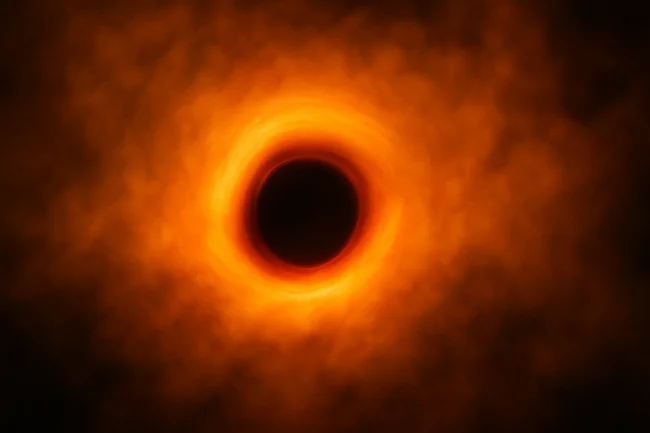
The same thing could be happening in the accretion disk of LID-568. Photons don't have time to escape; they are pulled inward by the infalling gas. The light pressure weakens, and the hole quietly continues to "eat." This effect is called a "light trap."
"Tricky Geometry" — a Thick Disk Instead of a Thin One
In the classical model, an accretion disk is like a thin pancake: radiation escapes outward, slowing the infall of matter. But if the disk becomes "thicker," the energy doesn't have time to escape and is carried inward along with the gas. As a result, the light pressure is weaker, and the matter falls faster.
Short Bouts of Gluttony
Even supermassive monsters can't eat forever. Supercritical accretion lasts tens of millions of years, then the black hole "rests." The active phase takes up only 1-4% of cosmic time, but during these short bursts, the hole gains mass. Perhaps we caught LID-568 during just such a rare outburst. 
What does this change in science?
For decades, physicists have puzzled over how giant quasars (black hole-based emitters) came to be in the young Universe, if less than two billion years had passed since the Big Bang when they emerged.
Classical theory couldn't explain their rapid growth. LID-568 appears to provide an answer: the early Universe experienced short periods of ultra-fast growth—supercritical phases—when black holes "violated" the light limit to become giants.
These gluttons pose no threat to us—they reside far away, primarily in the cores of galaxies. Our Sun, however, exists on the fringes.
But its very existence reminds us that the Universe still plays by its own rules, we just haven't had time to read all of them.












